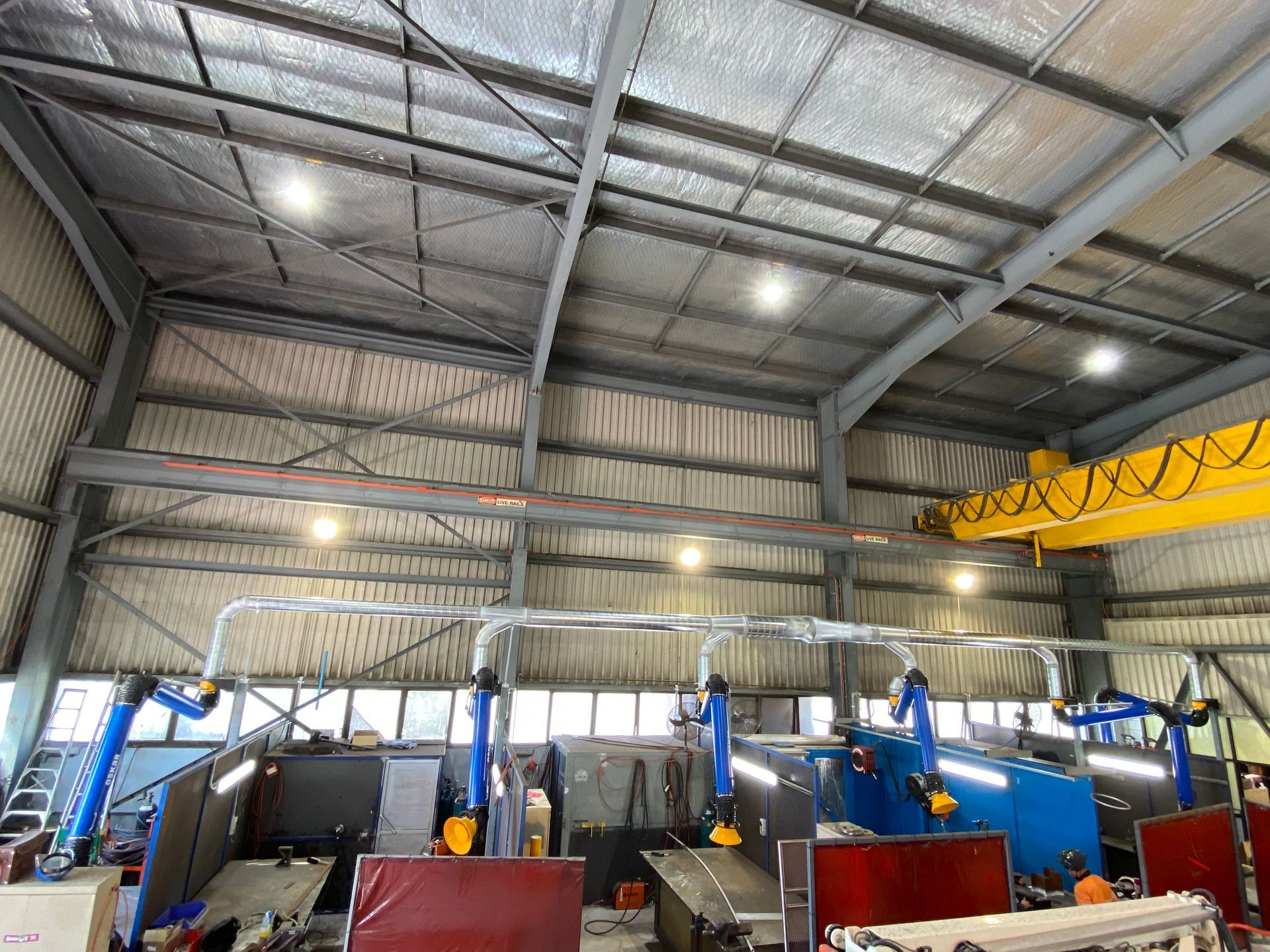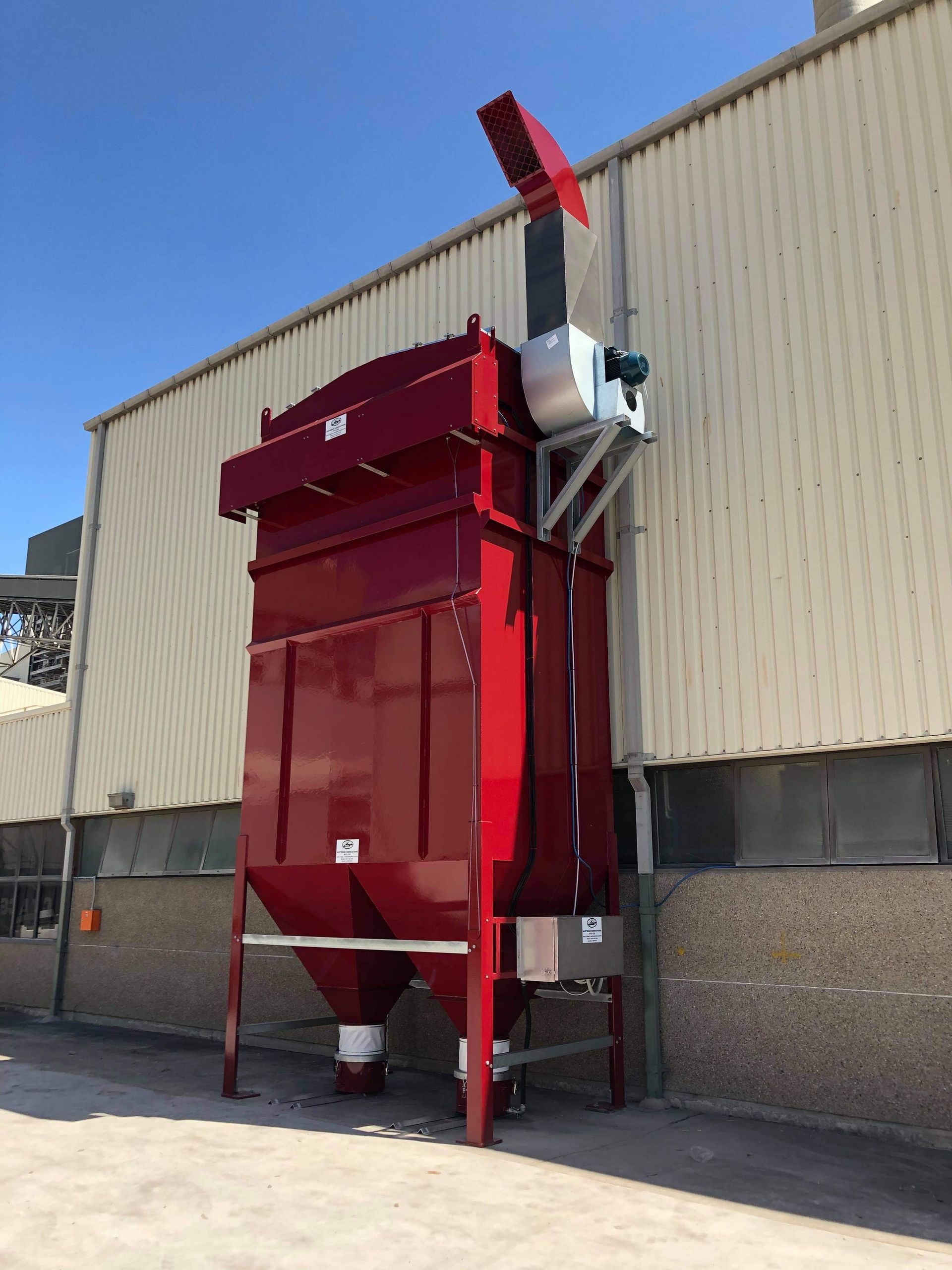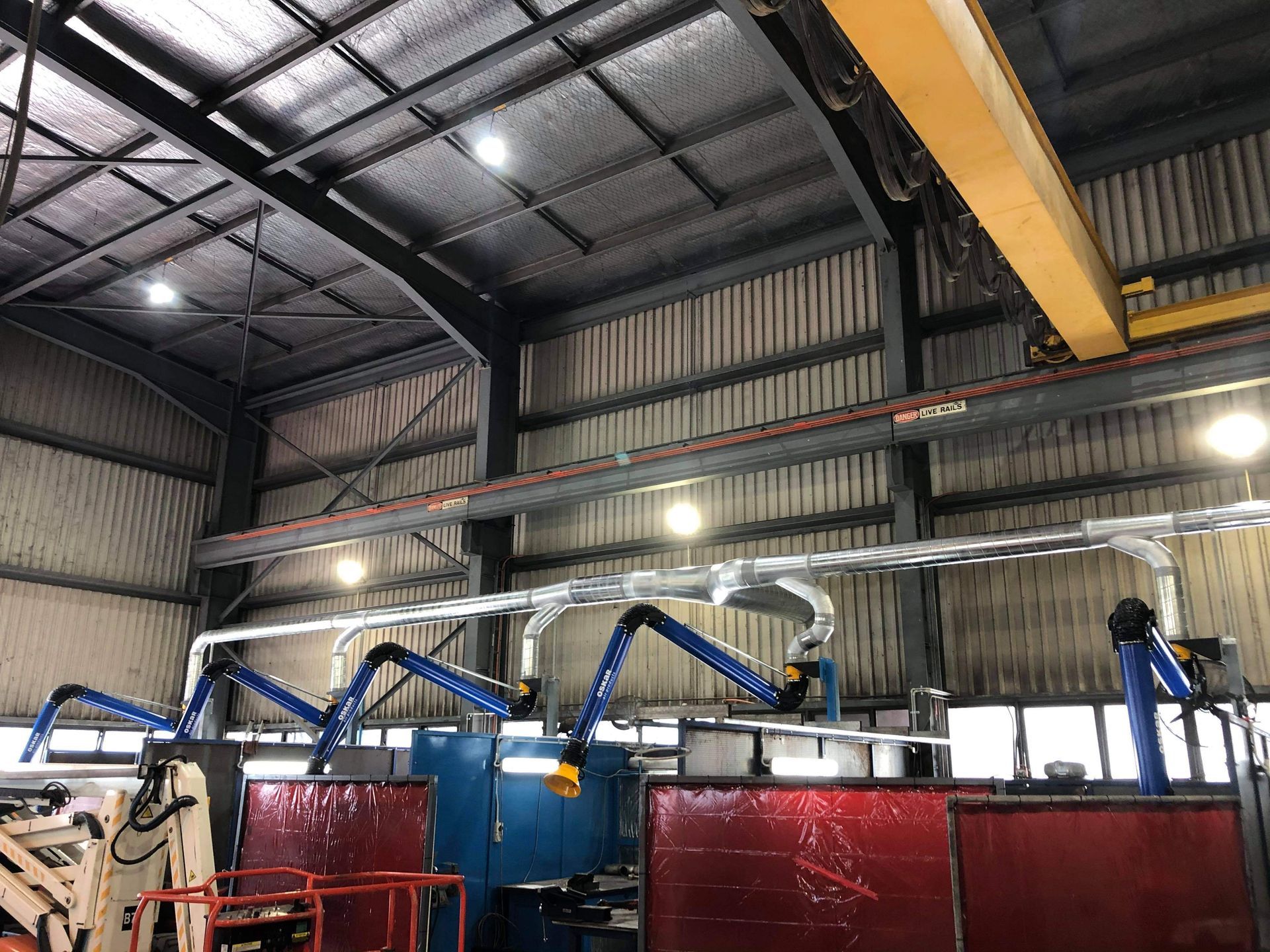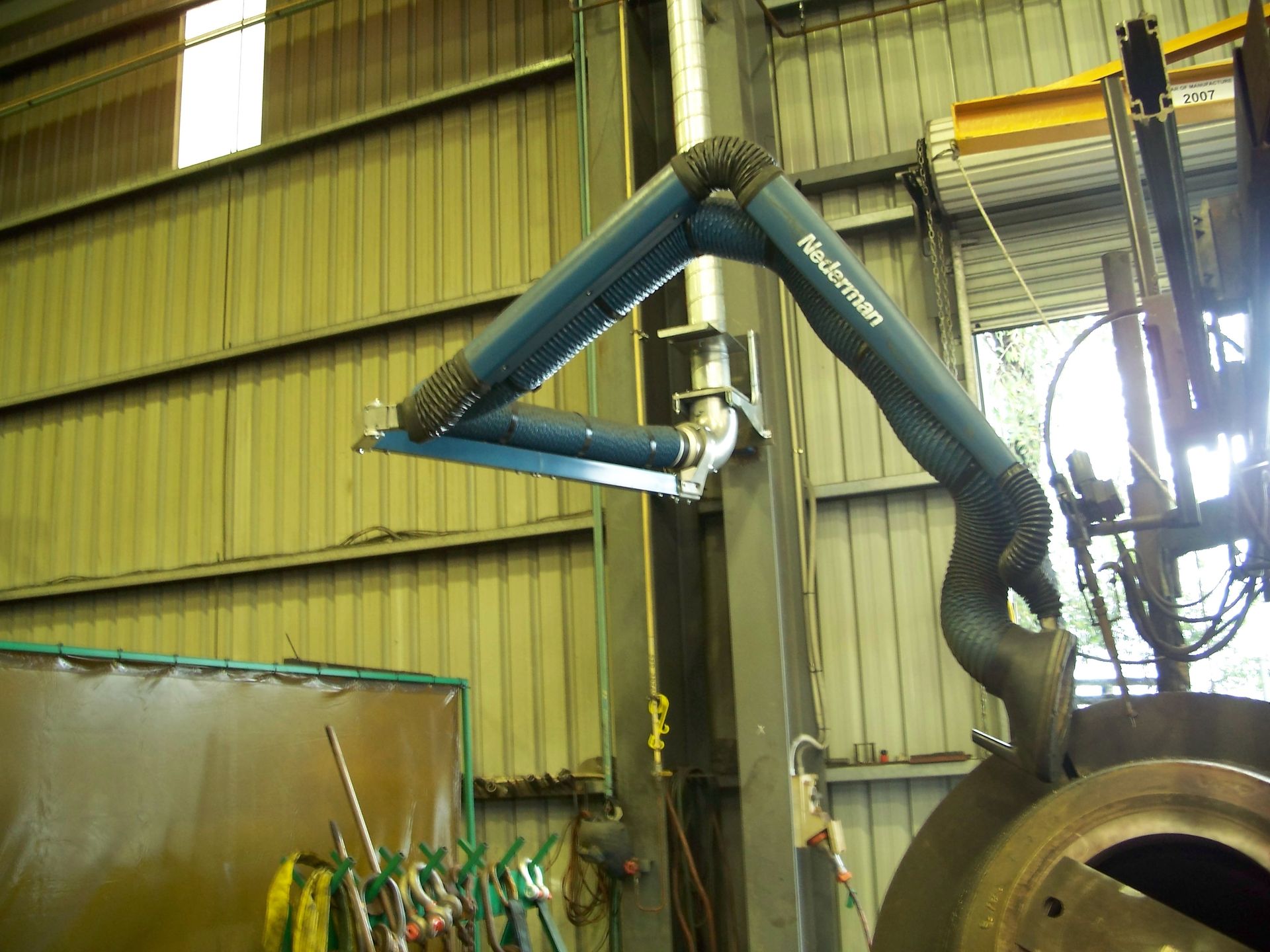Welding & Industrial Fume Extraction Systems in Australia
Australian-made welding and industrial fume extraction systems, expertly designed and built for over 24 years to ensure cleaner, safer work environments.
Welding fume extractors are essential tools in maintaining a safe, healthy, and productive working environment in any welding workspace. These devices are designed to remove the majority of hazardous fumes and dust produced during welding processes, protecting workers from inhaling dangerous particles and gasses. With the importance of occupational health and safety standards rising, welding fume extractors have become indispensable in workshops, garages, and industrial settings.
Why you should consider our Welding Fume Extractors
- Our reverse pulse central dust collectors are Australian made
- With over 24 years of building Welding Fume Extraction Systems we have never had one fail by premature wear
- Our dust collectors are finished in 2-pack epoxy of our colour “claret” or your preference
- All systems are built with large inbuilt central pre-separation chambers to help prevent sparks from welding, causing filter bag fires.
- Custom made in our factory to suit your specific site requirements
-
- If required, Fans can be built with silencer and/or lagging.
Below are a few of our standard Pre-Configured Welding Fume Extractors
Slide title
Write your caption hereButtonSlide title
Write your caption hereButtonSlide title
Write your caption hereButton
AF-OXY-BDT
Slide title
Write your caption hereButtonSlide title
Write your caption hereButtonSlide title
Write your caption hereButtonSlide title
Write your caption hereButton
AF-Multiarms-6
Slide title
Write your caption hereButtonSlide title
Write your caption hereButton
AF-Multiarms-10
Investing in a high-quality welding fume extractor is essential for any business involved in welding operations. Not only does it ensure compliance with health and safety regulations, but it also demonstrates a commitment to protecting the well-being of employees. By choosing the right extractor for their specific needs, businesses can create a safer, healthier, and more efficient working environment. With continuous advancements in technology, welding fume extractors are becoming more efficient, user-friendly, and integral to the welding industry.
The Importance of Welding Fume Extraction
Welding produces a complex mixture of metal fumes and gas by-products, including but not limited to manganese, aluminum, chromium, nickel, and lead, as well as gasses such as carbon monoxide, ozone, and nitrogen oxides. Prolonged exposure to these substances can lead to serious health issues including fume fever, respiratory diseases, and even long-term neurological damage. Thus, welding fume extraction not only complies with regulatory standards but also significantly reduces health risks to welders and nearby workers.
Key Features to Consider
When choosing a welding fume extractor, several key features should be considered to ensure optimal performance and safety. Firstly the extraction rate, measured in cubic feet per minute (CFM) indicates the device's ability to capture fumes; a higher CFM rating is necessary for more intense welding tasks. Secondly, the filtration system's efficiency in trapping different sizes of particles is crucial, with HEPA filters being preferred for capturing the smallest and most dangerous particles. Additionally, the ease of maintenance, including filter replacement and cleaning, directly impacts the extractor's longevity and effectiveness. Lastly, noise levels are an important consideration for worker comfort and communication.
Advancements in Welding Fume Extraction Technology
Technological advancements have significantly improved the efficiency and effectiveness of welding fume extractors. Our torch MIG welding fume extractor includes features such as automatic start-stop functions, which conserve energy and extend filter life by operating the extractor only when welding is taking place.
-
What are welding fumes and why are they harmful?
Welding fumes are a mix of metallic particles, gasses, and vapors produced during welding processes.
These fumes can contain harmful substances like manganese, aluminum, and chromium, which can lead to respiratory issues, neurological damage, and other health problems with prolonged exposure.
-
How does a welding fume extractor work?
A welding fume extractor works by using a fan or vacuum to draw in contaminated air through a filtration system, capturing harmful particles and gasses.
The cleaned air is then either recirculated back into the room or vented outside, reducing the concentration of toxic substances in the breathing zone of workers.
-
What types of welding fume extractors are available?
There are mainly two types: portable and stationary. Portable extractors are designed for flexibility and can be moved as needed, while stationary systems are fixed and often have larger capacities, suitable for continuous or heavy-duty welding operations.
-
How do I choose the right welding fume extractor for my needs?
Consider the type of welding, volume of fumes generated, workspace size, and mobility needs.
High-efficiency particulate air (HEPA) filters are recommended for their ability to capture the smallest and most harmful particles. Also, evaluate the system’s extraction rate (CMH) and noise level for a suitable fit.
-
Can welding fume extractors be used for other applications?
Yes, while designed for welding fumes, these extractors can also be effective in capturing some dust, smoke, grinding dust and other airborne contaminants in various industrial processes, offering versatile air quality solutions.
-
How often should filters be replaced in a welding fume extractor?
Filter replacement frequency depends on usage intensity and the type of materials being welded.
Regularly check filters for signs of clogging or damage and refer to the manufacturer’s guidelines for specific recommendations.
-
Are welding fume extractors required by law?
Regulations vary by region, but many places have occupational safety standards that require adequate ventilation and air quality controls, including the use of fume extractors, in workplaces where hazardous fumes are present.
-
What maintenance does a welding fume extractor require?
Regular maintenance includes checking and replacing filters, inspecting the extraction arms or hoses for damage, cleaning the unit, and ensuring the fan or vacuum system is functioning properly.
Always follow the manufacturer's maintenance schedule.
-
How can I reduce the amount of welding fumes in my workshop?
In addition to using fume extractors, improve natural ventilation, use welding processes that produce fewer fumes, apply local exhaust ventilation at the source, and ensure welders use appropriate personal protective equipment (PPE).
-
Do welding fume extractors improve overall workshop safety?
Yes, by reducing the level of harmful fumes and particles in the air, welding fume extractors contribute to a safer working environment, lower the risk of health issues among workers, and help comply with safety regulations, ultimately enhancing workplace safety and productivity.
Other Applications We Specialise
- Existing system upgrades
- Customisation and consultations
- Downdraft Tables
- Backdraft Tables
- Industrial Powered Roof Ventilators
- Duct is calculated under the equal velocity formula
- Duct installation including special hoods
Why wait any longer? Request a free quote on 02 4953 7112
Quick Links
Contact Info
Phone:
02 4953 7112
Email:
mail@austedan.com.au
Address:
14 Nelson Road Cardiff, NSW 2285
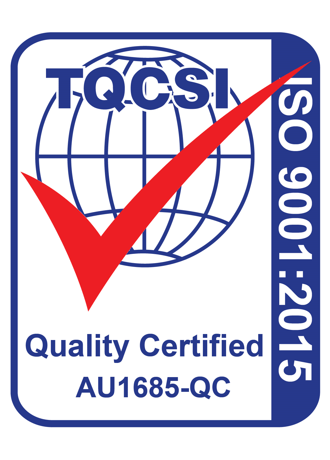
ISO Accredited
Members of Welding Association (WCIA)
ABN: 36092283675





